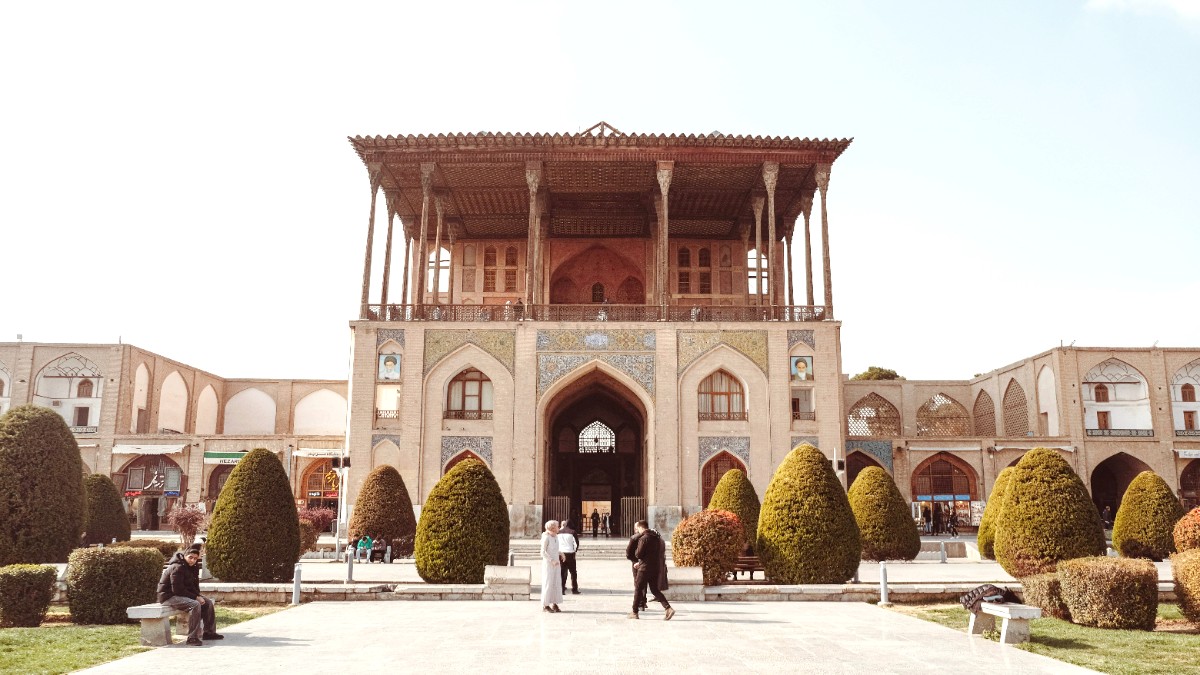
Central Iran, Iran
Persian cuisine stands out for its aromatic spices, fresh herbs, and the balanced use of sweet and sour flavors. Dishes often combine fruits, nuts, and meats with fluffy rice.
Esfahan, a historic capital, developed unique specialties, distinct from the broader Iranian culinary landscape. Food here often reflects a refined, courtly tradition alongside hearty, staple dishes.
Include rice (often fluffy and saffron-infused), lamb, beef, chicken, fresh herbs (mint, parsley, cilantro, dill), saffron, dried fruits (prunes, apricots, barberries), nuts (pistachios, almonds, walnuts), and yogurt.
Anticipate a delightful blend of sweet and sour notes. Aromatic spices like saffron and rosewater are prominent. Savory flavors often stem from cumin and turmeric. Dishes are rarely spicy in the way South Asian or Southeast Asian food may be.
Esfahan is famous for specific dishes not found elsewhere in Iran. These regional specialties bring unique tastes. The city's famous Beryani and Khoresht-e Mast display its distinct culinary identity.
Esfahan's most famous dish. This is a patty of minced lamb or beef cooked on a special small pan, served on a piece of Sangak bread. It is unique to Esfahan and a must-try.
Where to find: Look for dedicated Beryani shops (Beryani-e Haj Mahmoud Shafaat is a famous one) throughout Esfahan.
A sweet and savory Esfahani delicacy. Made with shredded lamb or chicken, yogurt, saffron, and sugar. Served cold as a side dish or dessert.
Where to find: Many traditional Esfahani restaurants offer this unique dish.
The national dish of Iran. Fluffy rice (chelo) served with various types of grilled meat (kebab), often lamb, beef, or chicken.
Where to find: Every Iranian restaurant. This is a staple.
A nougat-like candy specific to Esfahan. Made from the sap of a local plant, sugar, egg whites, and often pistachios. Gaz makes a popular souvenir.
A thick noodle soup, especially popular during Nowruz (Iranian New Year) and other festive occasions. It is considered good luck.
Abbasi Hotel Restaurant: A grand setting within a historic caravanserai. It features high-quality Iranian and international cuisine in a luxurious atmosphere. Reservations are advised.
Numerous traditional restaurants populate the city center and areas around Naqsh-e Jahan Square. These often feature traditional decor and serve classic Iranian dishes like kebabs and stews.
Dedicated small shops focusing only on Beryani bring a quick and cheap meal. Smaller stalls within the Grand Bazaar supply snacks and simple meals, perfect for a quick bite while exploring.
The Grand Bazaar presents a chance to discover small eateries and juice stalls.
Explore the market for fresh ingredients and local snacks.
International cuisine options are limited compared to Western cities. You may discover some pizzerias or fast-food style places.
For an authentic experience, stick to local Iranian cuisine, which is delicious and widely available.
Offered by guesthouses and local tour operators.
Relaxed settings for socializing and tea.
Unique ambiance, sometimes with live music.
A specific Esfahani culinary experience.
Iran's diet is heavily wheat-based (bread is a staple). Rice is naturally gluten-free. Communicate your needs clearly.
Utilizing a Translation app to explain "I cannot eat wheat/gluten" proves useful.
Clearly communicate any severe allergies to restaurant staff.
Communicate with your hotel or tour guide before dining out. They can often suggest suitable restaurants or assist you in explaining your needs.
Several local operators and guesthouses in Esfahan present Persian cooking classes.
Dining within a beautifully restored historical house brings an unique ambiance. These places bring not just a meal but a cultural setting, often with live traditional music.
Several local operators and guesthouses in Esfahan present Persian cooking classes.
Food tours, often combined with market visits, also exist.
These classes teach you to prepare classic Iranian dishes, delivering a delicious and practical cultural experience.
While formal courses for short-term visitors are rare, interaction with locals brings a chance to learn basic Farsi phrases.
Many locals are eager to practice their English, creating a mutually beneficial exchange.
Nowruz (Iranian New Year), celebrated around the spring equinox (late March), is a major family holiday.
Expect widespread festivities, special foods, and family visits.
Observe traditional crafts like miniature painting, minakari, and ghalamkari in the Grand Bazaar.
The Esfahan Music Museum often features live demonstrations of traditional Persian instruments.
Experience this unique traditional Iranian martial arts and athletic performance.
Engage deeply with Esfahan's food culture beyond dining by: